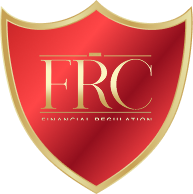Environmental, Social, and Governance (ESG) factors have become essential components of investment decision-making, as investors, companies, and regulators increasingly recognise the importance of sustainability in business operations. As a result, transparency in ESG reporting and compliance has emerged as a critical issue for businesses and investors alike. For financial markets to function effectively in the context of sustainability, clear and reliable ESG data is paramount. Without transparency, investors may struggle to make informed decisions, and companies risk undermining their sustainability efforts.
This article explores the importance of transparency in ESG reporting and compliance, highlighting the challenges involved and examining the role of regulatory frameworks in ensuring that ESG disclosures meet the expectations of investors, regulators, and the public. The discussion will also examine the efforts of financial regulators and industry bodies to standardise ESG reporting, the impact of this transparency on corporate behaviour, and the benefits it brings to stakeholders.
Before delving into transparency, it’s essential to understand what ESG reporting entails. ESG reporting involves disclosing a company’s environmental, social, and governance practices, providing stakeholders, especially investors, with information about how these factors affect the company’s operations and long-term performance. These reports typically cover a wide range of topics, including:
Environmental: Impact on the planet, including carbon emissions, energy usage, waste management, and resource conservation.
Social: Focus on issues such as employee welfare, community engagement, human rights, and product safety.
Governance: Corporate structure, leadership, shareholder rights, and anti-corruption measures.
ESG compliance, meanwhile, refers to a company’s adherence to laws, regulations, and guidelines that ensure responsible business practices across these three areas. The complexity of ESG reporting lies in its breadth and the evolving nature of global sustainability standards.
Transparency in ESG reporting means providing clear, accessible, and reliable information that accurately reflects a company’s sustainability performance. This transparency is critical for several reasons:
Informed Decision Making: Investors rely on transparent ESG data to assess the long-term risks and opportunities associated with investments. Without clear ESG disclosures, it is difficult for investors to make informed decisions about a company’s sustainability practices and future growth prospects.
Accountability: Transparent reporting allows stakeholders to hold companies accountable for their sustainability efforts. If companies provide clear, honest insights into their ESG practices, they are more likely to align their actions with their stated values and goals.
Trust and Confidence: By fostering transparency, companies build trust with their investors, customers, and the wider public. Transparent ESG reporting ensures that companies are not only adhering to regulatory requirements but are also proactively addressing sustainability challenges.
Regulatory Compliance: As ESG-related regulations become more robust globally, companies must comply with increasingly stringent disclosure requirements. Regulatory bodies are demanding greater transparency in ESG reporting to mitigate risks related to climate change, human rights, and corporate governance.
The increasing emphasis on sustainability has prompted financial regulators to implement frameworks and regulations that demand greater transparency in ESG reporting. These regulations aim to standardise ESG disclosures, ensuring consistency and reliability across industries, sectors, and geographies.
Around the world, financial regulators have begun to adopt various standards and regulations to encourage or mandate transparent ESG reporting:
The EU Non-Financial Reporting Directive (NFRD): One of the most significant steps in Europe has been the NFRD, which requires large public-interest companies to disclose non-financial information on environmental, social, and governance issues. This directive is being expanded under the new Corporate Sustainability Reporting Directive (CSRD), which aims to enhance the quality of sustainability disclosures across EU member states.
The UK’s Task Force on Climate-related Financial Disclosures (TCFD): The UK has also made significant strides in promoting transparency through the adoption of the TCFD recommendations. These guidelines provide a framework for companies to disclose climate-related risks and opportunities, including how their strategies align with the transition to a low-carbon economy. By 2025, all large UK companies are expected to disclose climate-related information in line with TCFD recommendations.
The US Securities and Exchange Commission (SEC): The SEC has increasingly been scrutinising the adequacy of ESG disclosures in the US. While the SEC has yet to mandate uniform ESG reporting standards, it has issued guidance encouraging companies to disclose material ESG risks. The SEC has also proposed more robust climate-related disclosure requirements to enhance transparency in the market.
Global ESG Standards Initiatives: At the global level, organisations like the International Financial Reporting Standards (IFRS) and the Global Reporting Initiative (GRI) have played a key role in standardising ESG disclosures. The International Sustainability Standards Board (ISSB), launched by the IFRS Foundation, aims to create a global baseline of sustainability disclosures, ensuring consistent and comparable ESG data.
Regulatory frameworks for ESG reporting have several key objectives:
Standardisation: By introducing standardised frameworks, regulators aim to ensure that ESG data is comparable across industries and markets, enabling investors to assess the sustainability of investments more accurately.
Transparency and Accountability: Regulations seek to create a level of transparency that holds companies accountable for their environmental, social, and governance performance. By ensuring that all large firms report consistently, regulators help identify risks and ensure that companies are meeting their commitments.
Mitigation of ESG Risks: Transparent ESG reporting is vital for identifying risks that could have material financial impacts on companies, including those related to climate change, labour practices, or governance issues. By requiring disclosures, regulators aim to ensure that companies are addressing these risks proactively.
Encouraging Sustainability: Regulations also aim to incentivise companies to adopt sustainable practices. By mandating ESG disclosures, regulators create pressure for companies to improve their ESG performance to attract investors and meet public expectations.
While the regulatory push for greater ESG transparency is a positive step, there are several challenges to effective ESG reporting. These challenges hinder the ability of regulators, investors, and stakeholders to obtain accurate and actionable ESG data.
One of the biggest obstacles to transparency is the lack of universally accepted standards for ESG reporting. Different countries and regions have different regulations, and companies often use diverse methodologies for reporting ESG factors. This inconsistency makes it difficult for investors to compare ESG performance across companies and industries.
To address this issue, the International Financial Reporting Standards (IFRS) and the Global Reporting Initiative (GRI) are working on creating standardised frameworks. However, the lack of uniformity in how ESG factors are defined and measured remains a significant challenge.
Another key challenge is the quality and availability of ESG data. Companies may not have the tools or expertise to collect and report accurate data on environmental, social, and governance factors. Additionally, there may be gaps in the data available for certain sectors or regions, making it difficult to assess the full ESG impact of a company or industry.
Regulators are pushing for better data collection and reporting practices, but many companies face challenges in obtaining accurate data, particularly related to indirect or supply chain emissions, employee diversity, or governance issues.
Greenwashing, or the practice of misleading investors by overstating a company’s environmental or social responsibility, is another significant issue for regulators. Some companies may exaggerate their sustainability efforts or present themselves as more environmentally friendly than they actually are. This undermines the transparency of ESG reporting and makes it difficult for investors to identify truly sustainable companies.
Regulators are working to address greenwashing by enforcing stricter disclosure rules and conducting audits to ensure companies’ claims are credible. Nevertheless, preventing greenwashing remains a complex challenge.
Despite these challenges, transparent ESG reporting brings numerous benefits to companies, investors, and society at large.
Transparency enables investors to make better-informed decisions, as they can evaluate companies’ ESG performance and its potential impact on long-term value. Transparent reporting allows investors to avoid companies with high ESG risks and target those that are committed to sustainability.
Transparent ESG disclosures help companies identify and manage risks, such as exposure to environmental disasters, regulatory fines, or reputational damage. It encourages companies to adopt better governance practices, which can lead to improved financial performance and reduced risk over time.
Companies that are transparent in their ESG reporting are more likely to build trust with stakeholders, including investors, customers, and employees. A strong commitment to sustainability can enhance a company’s reputation and attract long-term investors who value responsible business practices.
Transparent ESG reporting supports broader societal goals, such as the achievement of the UN Sustainable Development Goals (SDGs). By reporting on their sustainability practices, companies contribute to the global effort to address pressing environmental and social issues, such as climate change and poverty reduction.
Transparency in ESG reporting and compliance is essential for creating a more sustainable and responsible financial system. As sustainability becomes increasingly important to investors, regulators, and consumers, clear, reliable, and consistent ESG disclosures will be crucial for enabling informed decision-making, building trust, and mitigating risk.
The role of financial regulators in fostering transparency cannot be overstated. Through the development of standardised frameworks and regulations, they are helping to drive improvements in ESG reporting and ensure that companies are held accountable for their sustainability practices. However, challenges such as data quality, greenwashing, and a lack of global consistency must be addressed to make ESG transparency more effective.
Ultimately, transparent ESG reporting benefits not only investors and companies but society at large by supporting the transition to a more sustainable global economy. As the regulatory landscape continues to evolve, greater transparency will pave the way for more informed investment choices and a stronger focus on the long-term health of the planet and its people.
Be the first to know about new class launches and announcements.


Financial writer and analyst Ron Finely shows you how to navigate financial markets, manage investments, and build wealth through strategic decision-making.
